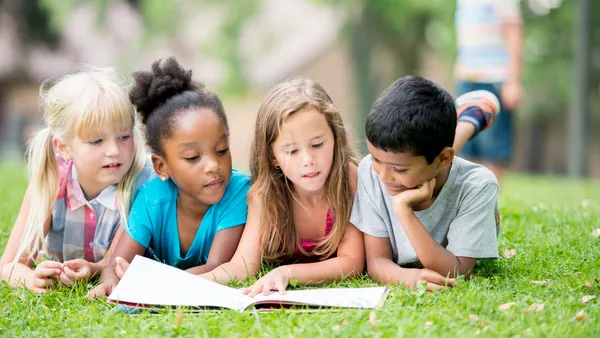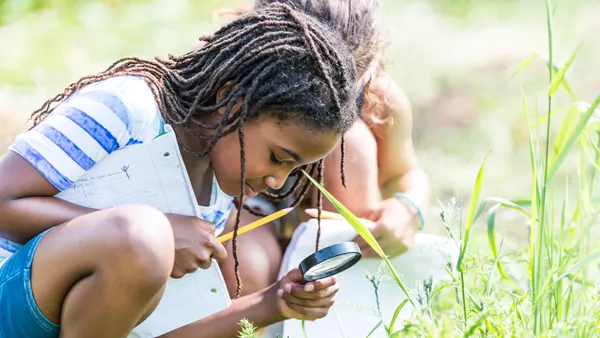Dive Brief:
- Ingenuity, which examines arts education in Chicago Public Schools, found a 97% increase in regular access to arts education over seven years as of the 2018-19 school year, the group wrote in its annual progress report. Still, 35% of students, predominantly those who are Black and also economically disadvantaged, remain “without consistent access to high-quality arts education,” according to the findings.
- The number of minutes elementary school students had of arts instruction also dropped from 70% in 2017-18 to 68% for 2018-19. So too the breadth and depth of arts instruction in high schools declined, from 64% in 2017-18 to just 60% for 2018-19. Furthermore, 81% of schools reported they had a dedicated arts budget for students for the 2018-19 school year — a significant drop from the 89% for the 2017-18 school year.
- Art teachers, too, had less support year-to-year, with 81% of schools reporting resources available for the 2017-18 year, but only 71% reporting the same for the 2018-19 school year. These findings led Ingenuity to report that, in Chicago Public Schools, “the arts education gap persists.”
Dive Insight:
The Ingenuity findings were gathered prior to the coronavirus pandemic disrupting the delivery of arts education for districts nationwide. The resulting transition to virtual learning moved what has traditionally been a hands-on experience to a virtual space, and arts curriculum may additionally face financial constraints, with education funding likely to be tightened by states facing budget concerns exacerbated by the pandemic.
While the findings in Chicago Public Schools are mostly positive when looking at the 2018-19 year as a whole, with 97% of students getting regular access to arts education over the seven years prior, it’s unclear that kind of growth is sustainable in light of the budget concerns ahead. Administrators and educators may want to look into other resources to protect arts and music programs from budget cuts.
That’s the path the School District of University City took in Missouri, working with a teen outreach group, Wyman, to try and collect art supplies to supply K-5 students with materials. And kindergartners at BIA Charter School in Norcross, Georgia, were even given art assignments that made use of materials they could find freely at home and in their own backyards. In Cortez, Colorado, teacher Andrew Campo turned to the community, asking for musical instrument donations, from flutes to saxophones, when his budget could not support all of the students who wanted to join band.
Schools and districts may also want to consider linking arts with other academic areas unlikely to face cuts to ensure arts education remains available to students. The shift from STEM to STEAM, which integrates the arts into science, technology, engineering and mathematics, looks at the way creative thinking can impact these other disciplines.
At Boston Arts Academy, that means students can explore the arts through their computer science classes, leading to one project that examined the link between John Coltrane and quantum physics. English Language Arts classes too can be linked to the arts, particularly theater. That’s actually the focus of the Folger Shakespeare Library in Washington, D.C., which works with English teachers to bring the Bard’s works into schools and maintains an online site, Forsooth!, stocked with instruction manuals and more.
Arts educators can tap into these resources and methods to help supplement the way they bring creative lessons to students and prepare for potential budget cuts.












